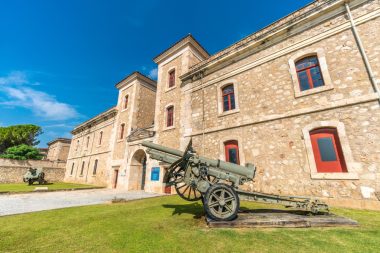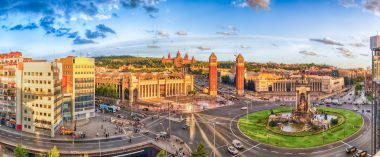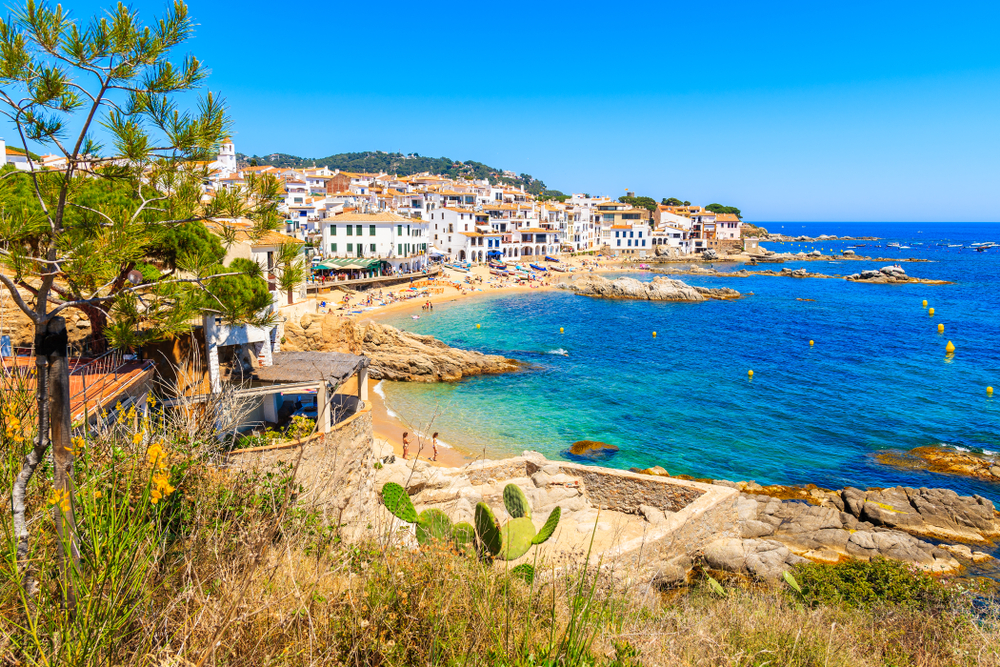When you think of Catalonia, the first thing that comes to mind is the breathtakingly beautiful Costa Brava, dazzling Barcelona, the famous architecture of Antoni Gaudí or the picturesque works of Salvador Dalí. But the region in the far northeast of Spain has much more to offer: hidden paradises climb up between lonely bays, small lively villages and wildly romantic mountain ranges that you won’t find anywhere else in Spain. Catalonia has an immense cultural and landscape diversity that will immediately captivate you as a visitor. Book one of the beautiful holiday homes and let yourself be enchanted by the beauty of Catalonia.
Special features in Catalonia
As Catalonia is by far the most varied region of mainland Spain, it is ideal for every type of holiday. From extensive green forests in the low mountain ranges to picturesque high alpine Pyrenees and agricultural lowlands to steep rocky coasts or extensive sandy beaches – in Catalonia you will find everything that makes your holiday heart beat faster.

But the region not only inspires with its unique panoramas, but also with its cultural treasures: history lovers will also get their money’s worth on a holiday in Catalonia. Thus, medieval monasteries stand out among dreamlike mountain landscapes and tell the pre-Roman history of Catalonia within their religious walls. So soon listen to the historical legends and heroic stories and set off on the time-honored path of the Iberians. You can then round off your trip through Catalonia with a delicious wine from the region, so that your stay is the perfect end.
But if that’s not enough, you can admire world-famous sights and attractions such as the Sagrada Família in Barcelona or the Castell de Sant Ferran, which will give you wonderful insights into the glorious and progressive architecture of Catalonia at the time. After an exciting sightseeing tour, the day can be ended with a relaxing walk through the romantic mountain landscapes or Park Güell.
Catalonia in a nutshell – What you should know

Catalonia is located in the northeast of the Iberian Peninsula and is considered an autonomous Spanish region. While the Pyrenees form the natural border with France in the north, the Mediterranean Sea separates the region from other countries in the east. To the west is the autonomous Spanish community of Aragón, to the south on the southeast coast the region of Valencia.
With an area of about 32,000 square kilometers, Catalonia is about the size of Belgium and is home to around seven million inhabitants. From an economic point of view, the whole region can be considered the strongest area in the whole of Spain , which also plays a leading role in the European market. Together with the regions of Lombardy in northern Italy, the Rhône-Alpes in France and Baden-Württemberg in Germany, Catalonia is one of the four most powerful economic areas in the European Union.
The booming city of Barcelona in particular scores at this point not only with a strong industry and a passable gross domestic product, but also with an extensive tourism sector that can record more than ten million holidaymakers per year. Since you have probably already heard a lot about Barcelona, we would like to introduce you to other Catalan highlights in this article, which are no less worth seeing than the dazzling metropolis.
The coast – the eternal water
A rental car is a fabulous way to start a trip to the white beaches of Catalonia. The Catalan coast has an eternally long and, above all, fantastic route of around 580 kilometres, which literally invites you to drive along and discover.
If you want to avoid the mass tourism on the popular Costa Brava, you can stop at many small fishing villages on your trip, which are typically located on the rocky coast and have still retained their old charm after all these centuries. Divers will also get their money’s worth on this part of the coast, as breathtaking flora will await them in addition to exotic creatures.
South of Barcelona now stretches the second large Catalan coastal section, which is also called Costa Daurada. This section is also popularly known as the Golden Coast , as it has miles of sandy beaches. Accordingly, this part of Catalonia is once again a popular tourist magnet. If you want to make your way south and travel a bit far away from the tourist crowds, you will come across natural spectacles in a class of its own again at some point in the Ebro Delta. The European nature reserve scores with its tranquillity and solitude, which are sometimes interrupted only by rare bird species.
The interior – romantic mountain ranges
If you are more of an active holidaymaker and want to avoid crowded beaches, Catalonia’s mountain ranges are ideal for climbing and hiking. The Pyrenees enchant numerous holidaymakers every year and offer not only an excellent view of the region, but also of neighbouring France.
The rest of the area can also score with numerous smaller mountain ranges. For example, on Montserrat, a bizarre sandstone mountain range northwest of Barcelona, you can visit the Montserrat Monastery, which is still considered a landmark of the region today. The monastery was founded as early as 880 and is still considered a national shrine today.
No matter which place you choose in Catalonia, a trip to the northeast of Spain offers something for every type of holiday, so you will definitely collect unforgettable impressions and memories


